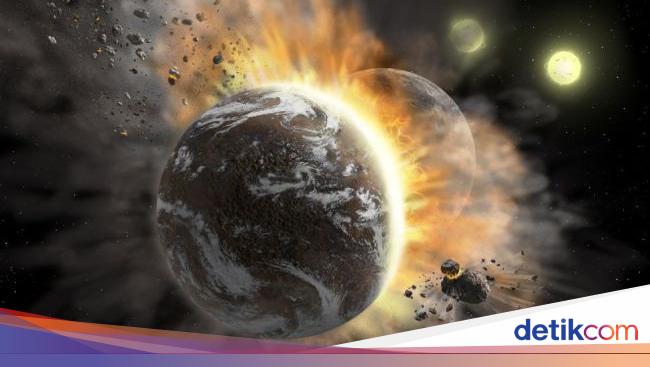Jakarta –
Why don’t planets collide more often? Of all possible ways planet orbits, how many configurations will remain stable over the billion years of a star’s life cycle? Questions like these are processed by artificial intelligence to predict which planetary systems will survive.
Rejecting unstable possibilities (all configurations that would cause a collision), will leave a sharper view of planetary systems around other stars. But it’s not as easy as it sounds.
“Separating stable from unstable configurations turns out to be an interesting and very difficult problem,” said Daniel Tamayo, NASA Hubble Fellowship Program Sagan Fellow, astrophysics science at Princeton. Phys.org.
To keep the planetary system stable, astronomers need to calculate several movements planet interacting over billions of years and examining every possible configuration for stability. This is a computationally difficult undertaking.
Since the time of Isaac Newton, astronomers have grappled with the problem of orbital stability. Although their struggles contributed to many mathematical revolutions, including calculus and chaos theory, no one had found a way to predict theoretically stable configurations. Modern astronomers still have to “force” calculations, even with supercomputers, not abaci or slide rules.
Calculations in no time
Tamayo realized that he could speed up this process by combining a simplified planetary dynamic interaction model with machine learning methods. This allows for the rapid removal of large swaths of unstable orbital configurations. Calculations that originally took tens of thousands of hours can now be done in minutes.
“We can’t unequivocally say ‘this planetary system will be fine, the other will explode soon.’ he said.
Instead of simulating a particular configuration for a billion orbits (for example, a brute force approach takes about 10 hours), Tamayo’s model simulates 10,000 orbits and takes only a fraction of a second.
From this brief snippet, they calculated 10 summary metrics that capture the resonance dynamics of the system. Finally, they trained a machine learning algorithm to predict from these 10 features whether the configuration would remain stable if they allowed it to continue to reach one billion orbits.
“We call the model the SPOCK—Stability of Planetary Orbital Configurations Classifier—in part because it determines whether the system will ‘live long and prosper,’ says Tamayo.
SPOCK determines the long-term stability of the configuration planet about 100,000 times faster than the previous approach, solving computational bottlenecks.
Tamayo cautions that he and his colleagues have not “resolved” the general problem of planetary stability. SPOCK reliably identifies rapid instability in compact systems, which they think is most important in attempting to perform stability-constrained characterizations.
“This new method will provide a clearer window into the orbital architecture of planetary systems beyond our own,” Tamayo said.
Jessie Christiansen, an astrophysicist at NASA’s Exoplanet Archive who was not involved in the study, said: ‘SPOCK is very helpful for understanding some of the faint and distant planetary systems recently spotted by the Kepler telescope.
It’s hard to limit their properties with the current instruments. Is that planet rocky, ice giant, or gas giant? Or something new? At the very least, this new tool will allow us to override the dynamically unstable composition and configuration of potential planets, and allow us to do so more precisely and on a much larger scale than previously available.”
Watch Videos”LAPAN Hopes that Space Commercialization Ambition will spread to Indonesia“
[Gambas:Video 20detik]
(rns/rns)
– .


